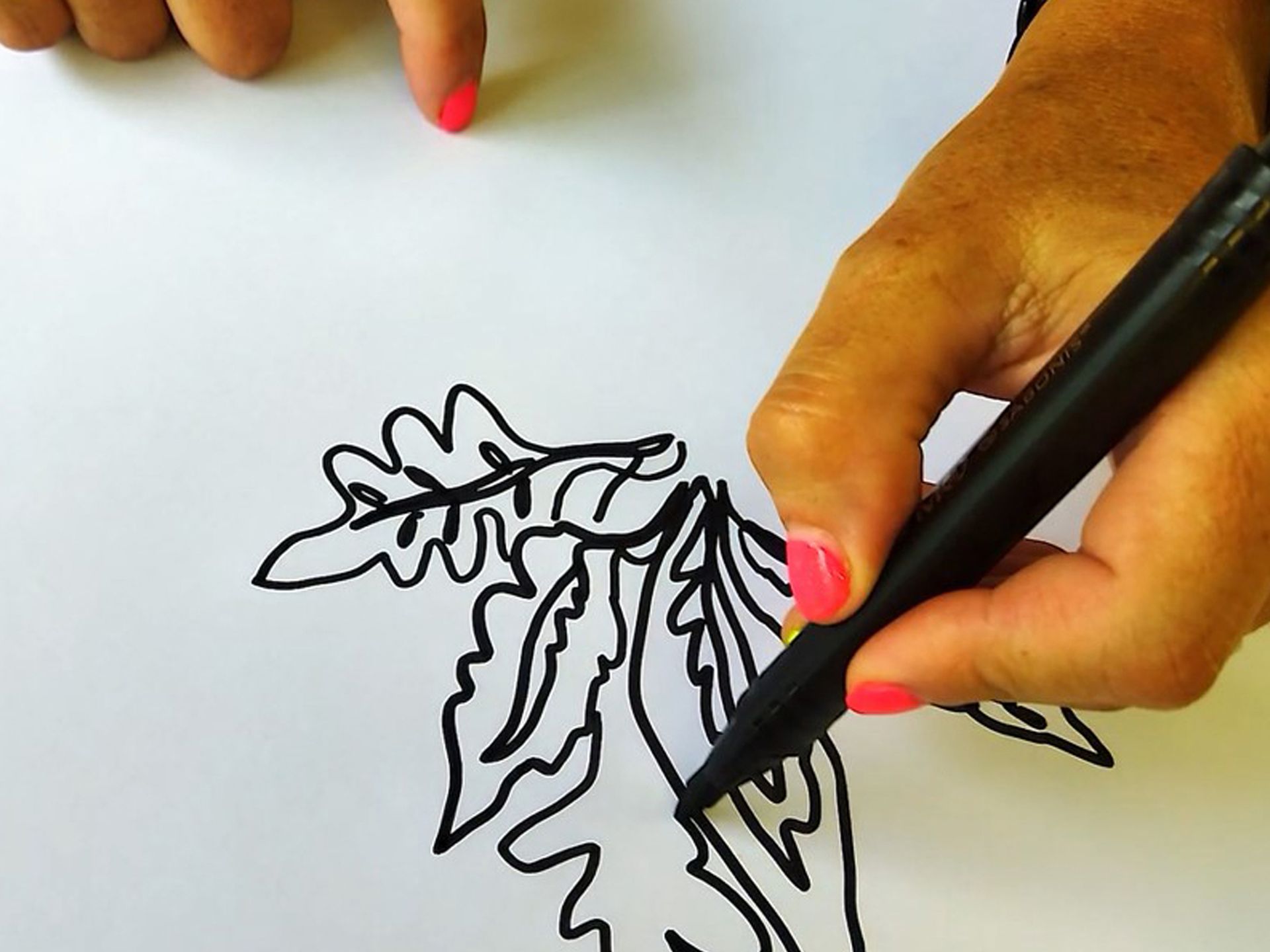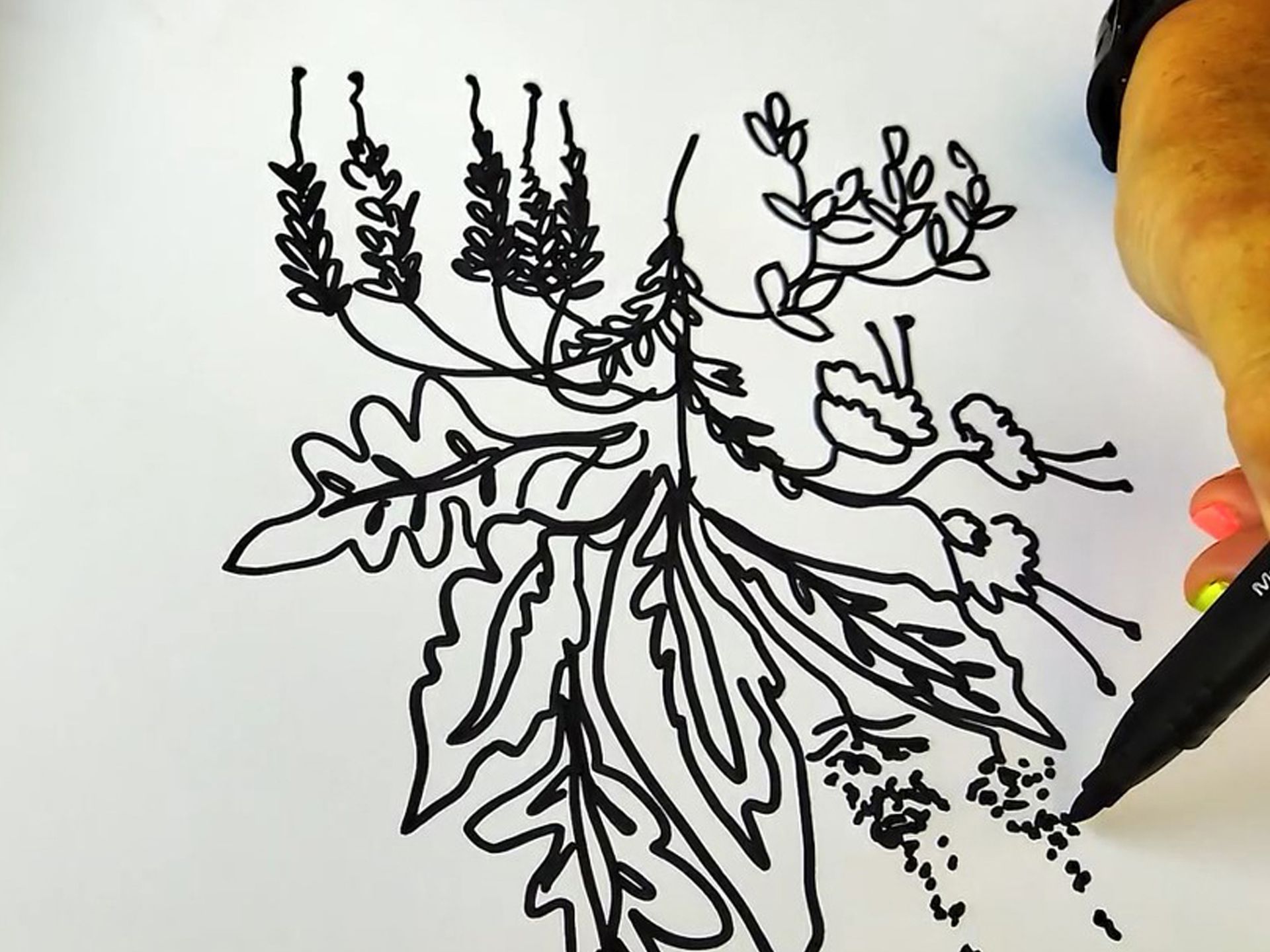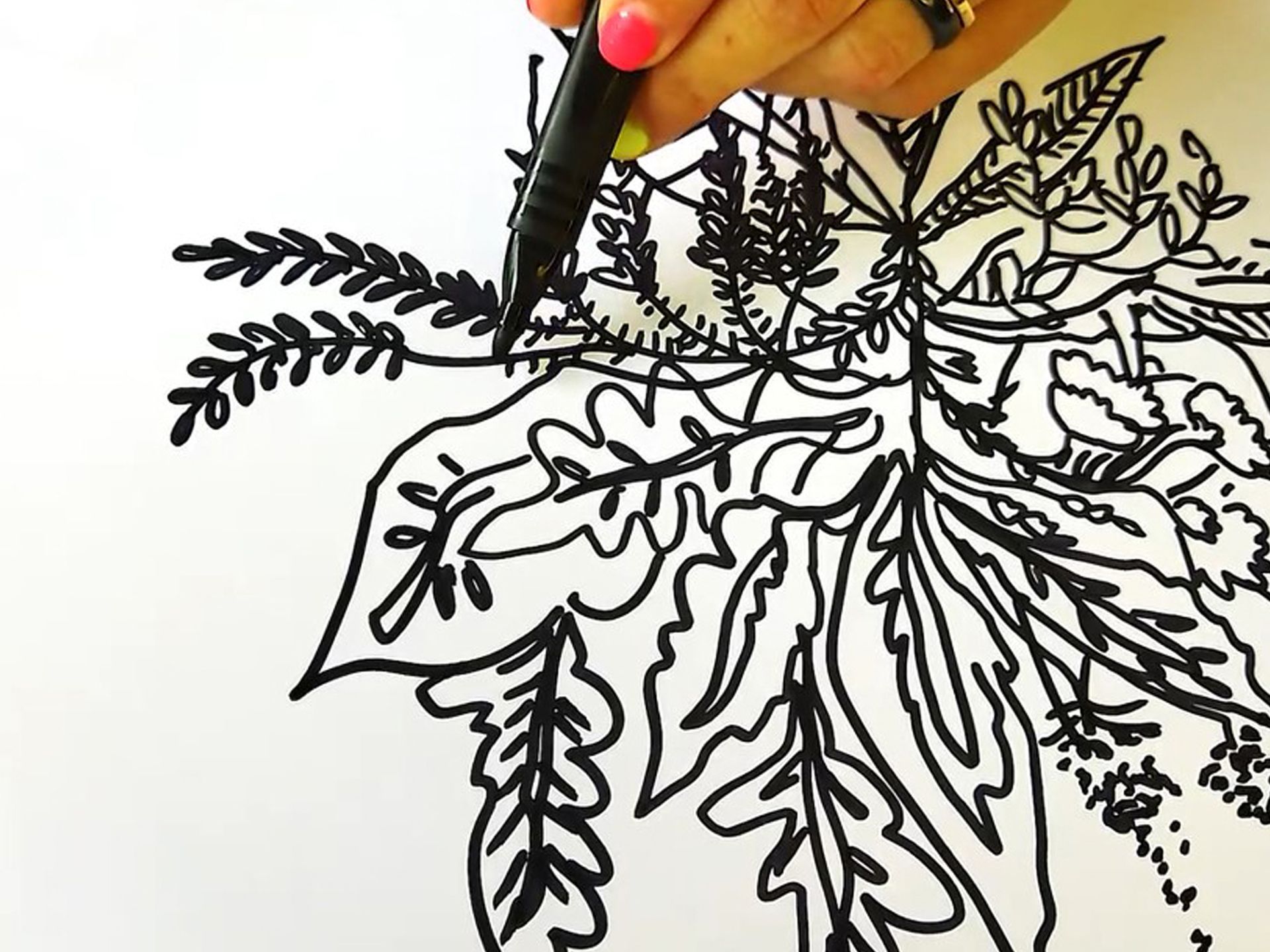Julia Romano
Julia Romano was born in 1978, in Carlos Pellegrini, Santa Fe, Argentina.
In 1997 she began to study art at the National University of Córdoba and graduated as a Professor and Bachelor of Fine Arts with a specialty in Engraving.
Her artistic research focuses on questioning about the way each one has to recognize and experience the territory that surrounds them.
She has been interested in the study of landscape throughout the history of art and reflects on the possibility of creating one's own landscape through personal stories.
Her works are digital collages made up of photographic and pictorial images, freehand drawings and scans of botany books. She also develops installations where she recreates part of her garden through videos, photographs, objects, texts and sound.
She has participated in numerous exhibitions, prizes and fairs at national and international level. Her work is part of important public and private collections in Argentina and abroad.
She lives with her family in the town of La Calera, on the outskirts of the city of Córdoba, Argentina.
Gardens at Sight (Traces - 02/2023)
“Gardens at sight” is a video that tells of the relationship I have with the garden at home and the space it occupies in my everyday life. The garden as an all-powerful entity that is itself present, past and future and a container of incalculable atmospheres.
This work is an ode.
5'22''
Text in the Video
Gardens at Sight
I stand in the middle of my garden and watch it carefully. My gaze flies over each sector, the stone flowerbed with succulents, lilies and geraniums, the two Roman flower pots on their grooved columns, the small rim where 3 or 4 different species of vines have climbed so now it blooms purple, yellow, pink, the ceibo -that is no longer a shoot- exploded of red dots, the huge rosemary also in flower, the overflowing lemon trees and the incipient mandarin, the small pond next to the garden gnome, the leafy poplars swaying in the wind, the milk jasmines that put together a dense vegetable dividing wall, the yellow and the red rosebush about to bloom, the clarín de guerra wanting to reach the balcony, the marvelous monstera in the corner of the roaster, the santa rita climbed up to the sky.
Looking at my garden I find myself immersed in an experience of contradictory sensations: Because the rain -and what it brings- make me happy, the new shoots, the green of the grass, the buds, and when I am in front of these beauties I immediately think of the threat of the drought, the days of suffocating heat, the north wind that dries the soul. I'm never sure to be happy or already feel sad about what's to come.
I want to think about the privilege I have of owning a garden that, despite these inclement weather, grows and is more beautiful every day. Thinking about cycles, how things change to transform, reproduce, be something else. What is lost this season will give rise to other species the following season. And in this coming and going, the garden builds its personality, its unique character, it is a reflection of the territory where it thrives, it is a reflection of me that with tenacity I keep it alive.
Many times I think that the garden is me. We both mutate and change and despite the often adverse weather, we continue to sprout. The garden transforms along with me, grows stronger and wiser and dreary and gray but then green again; it is full of weeds and gray hair and also good stems, it has thorns and wrinkles and also shade and coolness, it is a battlefield and also a refuge, nest, confort and protection.
My garden is also people, it is a network of species constituting a loving constellation where memories, moments and bonds converge. It was built primarily on relentless trading and requisitions, innocent thefts, incipient searches, and profitable travels. Each plant is classified according to a personal inventory. I see the poplars and the lemon tree and they are Rodrigo, I see the ceibo and it is Nati, the red vine is Simón's birthday, the lilies are Salta and Ana and her mother, the monstera is Alta Gracia, Xime is on the cat's claw, the mint and the mostasilla. Jalo and Anita are reflected in the small pond. The clarín de guerra is mama and papa. Brazilian joy, Momo. Weekends at La Cumbre are the ivy and the yellow jasmine. In the succulents at the entrance I see Matilde and in the purple salvias and the pandurata I see Ale and Agustín. Mariel is in the fern and the red-flowered achiras and Silvina in the green and white incense. A visit to Norita's house is the bright green vine. The glisina is Yani and the Juan-without-clothes is Ceci.
In the garden I can see the passage of time, the complexity of relationships -human and natural- respect, patience, impatience, plague, ruin, tragedy and again hope, struggle, tenacity, wait, conquest, prosperity, growth, change, transformation, evolution.
Click on the images for full view










